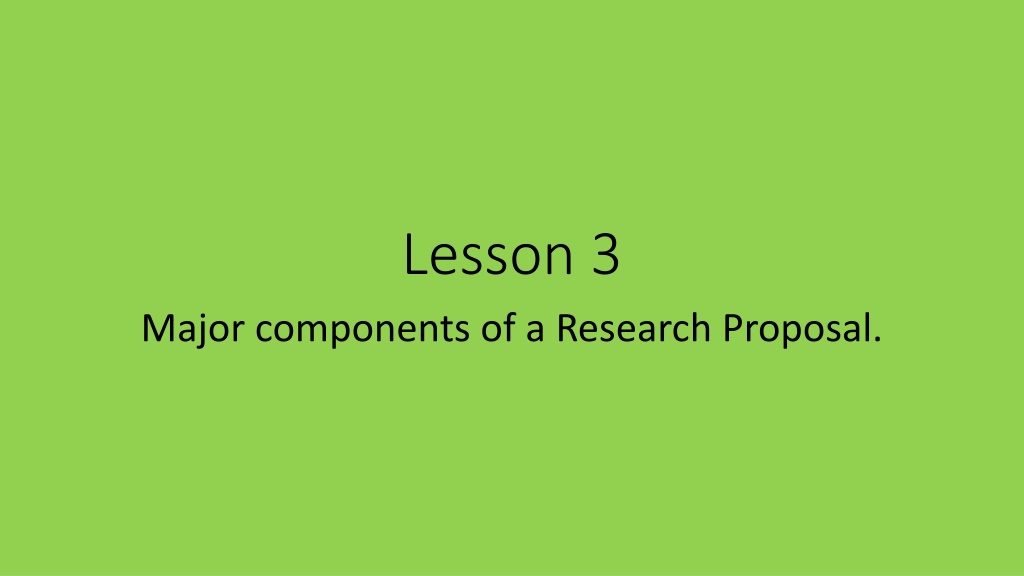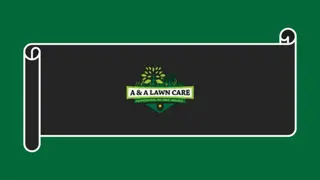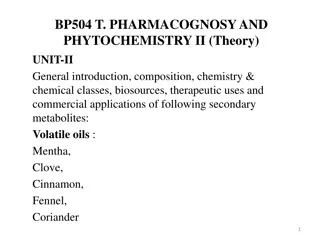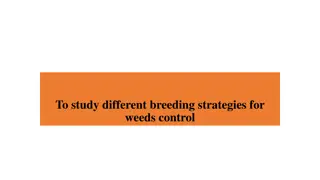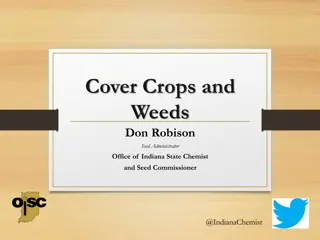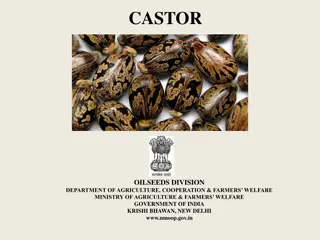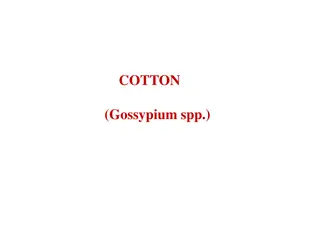Innovative Weed Control Technique for Commercial Pineapple Cultivation
This research proposal focuses on developing a cost-effective technique to control weeds in commercial pineapple cultivations to improve yields and income for farmers. The introduction provides insights into the current status of pineapple cultivation in Sri Lanka, highlighting the challenges faced due to the ban on weedicide usage. The problem statement emphasizes the need for a practical weed control method. The objectives aim to assess the impact of weeds on yield and introduce the new technique to growers.
Download Presentation

Please find below an Image/Link to download the presentation.
The content on the website is provided AS IS for your information and personal use only. It may not be sold, licensed, or shared on other websites without obtaining consent from the author. Download presentation by click this link. If you encounter any issues during the download, it is possible that the publisher has removed the file from their server.
E N D
Presentation Transcript
Lesson 3 Major components of a Research Proposal.
Learning Objectives To introduce the components of a research proposal. To explain how to attend the each component.
Learning outcomes At the end of this lesson, you should be able to develop a draft of a proposal with the major components.
Major components of a research proposal 1. Topic 2. Introduction/Background 3. Problem identification 4. Objectives 5. Materials and Methods 6. Expected outcome 7. Timeline 8. References
Introduction Give an overview about the subject area Introduce about the selected area . Resent status of the area Coding the evidences Limitations/prospects etc.
Eg: Development of an appropriate technique to control weeds in pineapple (Ananas comosus)cultivation Introduction Pineapple is a popular fruit crop grown in Sri Lanka. The total extent of the Pineapple cultivation is around 5000 ha (Department of Agriculture 2021). The cultivation has mainly confined to a few districts specially in the wet and intermediate zones. Pineapple is generally cultivated as an intercrop under coconut, rubber and other perennial crops. The Pineapple is the number one fruit crop exported by Sri Lanka compared to the other fruits ( Export Development Board 2020). The cost of production is about Rs 15/kg and the annual production is around 185,000 mt. ( Word Bank 2021). The average fruit size has been reported as 1-1.5 kg ( DOA 2021) and there is a potential to increase the yields with good management practices. Among the agronomic practices weed management has become a serious problem since recent past. Generally, farmers apply weedicides to control weeds in commercial cultivations however the usage of weedicide has been banned by the government in 2021. Therefore, weed management is not practicing properly in many of the large scale cultivations.
Problem statement Pineapple is a plant having spiny leaves and it is difficult to control weeds by hand. Therefore, farmers hesitate to control weeds manually and maintain their cultivations with weeds. Hence, they obtain poor yield and the income. Accordingly, it is important to introduce an easy technique to control weeds in commercial Pineapple cultivations.
Objectives To develop an instrument to remove weeds in commercial Pineapple cultivations. Specific objectives 1. To assess the impact of weeds on yield 2. To popularize the technique among growers
Materials and Methods 1. Materials The things that you are expecting to use E.g. Metals, steel blades, nuts , ????? 2. Location Agrarian service Centre, Mannar/ UCIARS, Waligattha ??? 3. Treatments- Two treatments T 1. Hand weeding T 2. Chemical weeding T3. Cover cropping T4. Using the instrument developed
Continued 4. Experimental design 5. Number of replicates / plot size/ No of plants per plot 6. How to produce the instrument explain the steps 7. Observations /Data collection Weed density in two weeks interval Efficiency of weeding Yield / plant / Ha Cost involvements 8. Data analysis Describe what is the method Eg, ANNOVA, Mean separation etc.
Expected outcome Assembling of an efficient instrument Cutdown the cost for weeding Encouragement of growers to use the instrument
References Should be in the alphabetical order Follow a specific order Author, year, name of the report/article/book, page number Eg: Henry, M.G.,(2019), Management of weeds in horticultural crops, Journal of Horticultural Science, vol 2 , 102 -106.
Timeline What are months in the year Different activities expected to be completed Janu. Feb March Apr May June July Aug proposal development Starting field work/ assembling machine Maintenance and data collection Data analysis Writing the thesis Submitting thesis
Homework Develop a research proposal as a group activity by each group. Present at the next class.
